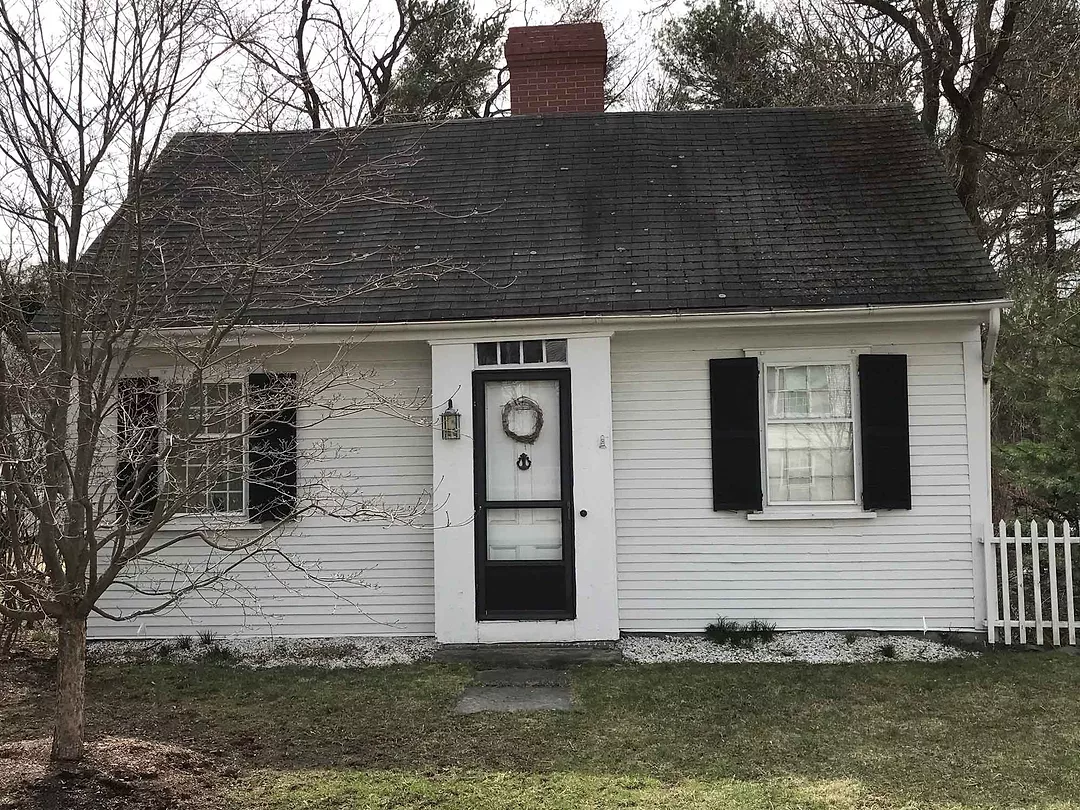Colonial Concord was a small subsistence-level farming community. By the eighteenth century, provincial Concord was three times larger (1,500 people) and six times wealthier due to a rapid rise in commerce and manufacturing. The white cottages on the church green reflect Concord’s transformation.

#1 Church Green
| ©Jim Sherblom#1 Church Green dates from the mid-eighteenth century when Captain John Adams built a shop here opposite his house at 57 Lexington Road. It was a craft shop displaying the various manufactures of local craftspeople, and it was said Captain Adams was up for a game of checkers night or day—and he generally won. He was elected to the board of selectmen, an unpaid role, but he could eat or drink for free at the Wright Tavern during council meetings. His unpaid role may have cost the town of Concord dearly.
#7 Church Green is one of the oldest surviving buildings in Concord, dating back to the mid-seventeenth century. In the early nineteenth century, it was the home of William Munroe, a cabinet maker building furniture and mahogany cases for his brothers’ clock shop on the Milldam. Before the War of 1812, even paper and pencils were imported from England. Following the war, Munroe developed a proprietary pencil-making process. He moved his family to larger quarters and eventually gifted Concord our Free Public Library. In the late nineteenth century, #7 Church Green was the home and workshop of a woodcutter named Joseph White. When he died, First Parish bought the house to use as the residence for its sexton and other transient workers.

#23 Church Green
| ©Jim Sherblom#23 Church Green was built around 1800 by a carpenter and builder named Nathan Hosmer and served as his home and shop. In 1846, wheelwright Isaac Thayer bought it for his home with his shop a short walk away. Over the years this house was occupied by various merchants and craftsmen who rented here until they either were successful enough to buy a bigger house or else failed and moved on. These small white cottages are a testament to Concord’s growing nineteenth century commercial culture and how a small New England town adapted to the housing needs of its rapidly evolving culture.
#25 Church Green was also built in the early nineteenth century and occupied in the mid-nineteenth century by Nehemiah Ball with his wife, Mary Merriam. They were both descendants from old Concord farming families but not well suited to the farming life, so he worked in Deacon Vose’s tannery, a smelly and difficult business several yards from his front door, and buried himself in his books. He and Mary raised seven children, five girls and two boys, in this small house. He rose to be Concord’s constable and collector of taxes for several years, debated in the Lyceum, became superintendent of the First Parish Sunday school, a deacon of the church, town clerk, and justice of the peace. An auspicious life.


